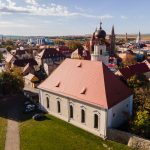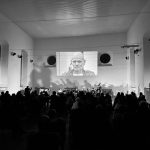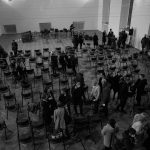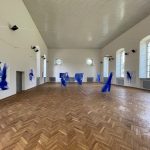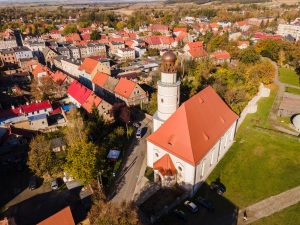
Tytuł projektu: Remont budynku byłego Kościoła Ewangelickiego w Ziębicach
Beneficjent: Gmina Ziębice
Wartość projektu: prawie 2,6 mln zł
Dofinansowanie UE: ponad 1,4 mln zł
Ziębice to urokliwe, niewielkie miasteczko z historycznym, zachowanym właściwie w pełni, układem urbanistycznym, położone w południowo-wschodniej części województwa dolnośląskiego. Urzekające swoją zabytkową architekturą, pięknem krajobrazów i życzliwością mieszkańców.
Historię widać tu „gołym okiem”, a zabytków jest naprawdę sporo. Starówka z ratuszem miejskim, Brama Paczkowska wraz fragmentami murów obronnych z XIII i XIV w., liczne obiekty sakralne, zabytkowy park i dzielnica willowa oraz dziedzictwo poprzemysłowe.
Wśród cennych historycznie obiektów, które od lat czekały „na swój czas”, był również były kościół ewangelicki. Świątynia powstała w latach 1796-1797, na pozostałościach murów rezydencji książęcej o charakterze pałacowym. Kościół został wzniesiony na planie typowym dla śląskich rozwiązań, czyli rzut prostokątny z wieżą na dłuższej osi. Pierwotnie posiadał dwie kondygnacje oraz empory wzniesione na planie elipsy. Po burzliwym okresie II wojny światowej i licznych zniszczeniach, w latach 1968-1969, został przystosowany na cele oświatowe. Pełnił funkcję sali sportowej dla uczniów, położonego tuż obok, liceum ogólnokształcącego, a po zamknięciu szkoły – opuszczony – niszczał i straszył.
Samorząd zdecydował się ratować ten obiekt. Wykonano kompleksową modernizację byłej świątyni, która obejmowała: remont izolacji ścian fundamentowych oraz wykonanie odprowadzenia wód opadowych budynku, remont elewacji oraz dachu, a także przebudowę pomieszczeń z dostosowaniem ich dla osób z niepełnosprawnościami. W trakcie realizacji prac konieczny okazał się także gruntowny remont kopuły kościoła .Bezpośrednim celem przedsięwzięcia była rewitalizacja obiektu, która pozwoliła przekształcić niszczejący zabytek w centrum kulturalno-oświatowe. Obiekt zlokalizowany jest w centrum miasta, w bezpośrednim sąsiedztwie zabytkowych murów obronnych i plant miejskich, będących miejscem rekreacji i wypoczynku mieszkańców, dlatego realizacja projektu znacząco przyczyniła się również do poprawy estetyki przestrzeni publicznej.
W Evangeliku – bo tak teraz nazywają go teraz mieszkańcy, Ziębice zyskały nową przestrzeń dla kultury. Obiektem zajmuje się Ziębickie Centrum Kultury. Na co dzień swoje treningi organizuje tam sekcja tańca towarzyskiego AKTAN oraz szkoła gimnastyki artystycznej GRACJA. To też centrum wydarzeń kulturalnych – koncertów, wystaw oraz przedsięwzięć animacyjnych i edukacyjnych. Teraz to także jedna z najciekawszych dolnośląskich przestrzeni galeryjnych, która została doceniona również przez Akademię Sztuk Pięknych im. Eugeniusza Gepperta we Wrocławiu.
Beneficiary: Municipality of Ziębice
Project title: Renovation of the former Evangelical Church building in Ziębice
Project value: nearly 2.6 million PLN
EU funding: over 1.4 million PLN
The Temple of Art in Ziębice
Nestled in the southeastern corner of the Lower Silesia region, Ziębice is a picturesque, small town that boasts a meticulously preserved historical urban layout. Its allure lies in its rich architectural heritage, breathtaking landscapes, and the warm hospitality of its residents.
Ziębice’s history is deeply ingrained, and its landscape is dotted with countless historical monuments. The old town, adorned with a splendid town hall and the iconic Paczków Gate, still bears remnants of defensive walls dating back to the 13th and 14th centuries. The town also hosts an array of religious landmarks, a charming historic park, an elegant villa district, and traces of its industrial legacy.
Among the long-awaited, historically significant restorations was the revival of the former Evangelical church. Erected between 1796 and 1797 on the remnants of a princely residence with regal overtones, this church stands as a testament to Silesian architectural finesse. Its design, conforming to the traditional Silesian style, features a rectangular layout with a tower extending along its length. Originally comprising two stories and galleries gracefully curved in an elliptical shape, it weathered a tumultuous period during World War II, sustaining substantial damage. In 1968-1969, it underwent a transformation, finding a new lease on life as an educational facility. Initially serving as a sports hall for students from the nearby high school, it later fell into disuse, left to deteriorate.
The local government made a resolute decision to rescue this cherished institution. They embarked on an extensive modernization endeavour for the former temple, encompassing critical repairs to the foundational wall insulation and the installation of a state-of-the-art rainwater drainage system. Moreover, the project entailed a meticulous facelift for both the exterior facade and roof, coupled with an interior redesign focused on enhancing accessibility for individuals with disabilities. Notably, the restoration efforts extended to the church dome, which required a comprehensive overhaul. At its core, this undertaking was driven by a singular objective: to breathe new life into the aging historical landmark, thus transforming it into a vibrant hub for culture and education. Currently, it is positioned prominently in the heart of the city, in close proximity to historic defensive walls and urban parks and is used by the residents for entertainment and rest. The project made a substantial contribution to the aesthetic enhancement of the public space.
Today, the venerable structure, rechristened as ‚Evangelik,’ has been rejuvenated to serve as a vibrant cultural hub under the auspices of the Ziębice Cultural Centre. Within its walls, it houses an active ballroom dance section named AKTAN and an artistic gymnastics school called GRACJA. Moreover, the venue hosts a rich tapestry of cultural events, encompassing concerts, exhibitions, educational initiatives, and artistic endeavours. It has evolved into one of the most captivating gallery spaces in Lower Silesia, garnering recognition, even from the esteemed Eugeniusz Geppert Academy of Fine Arts in Wrocław.
 Szukaj
Szukaj










